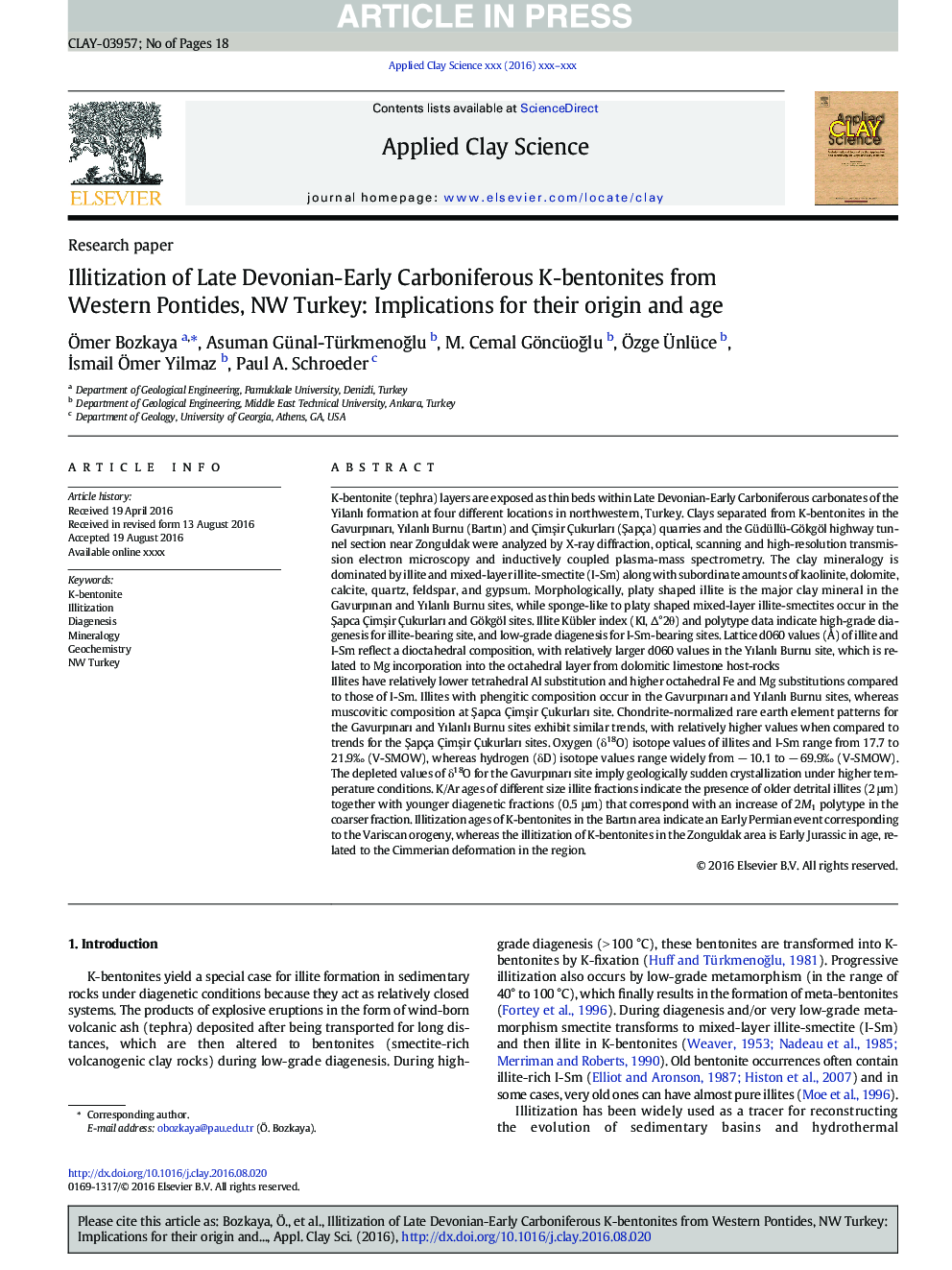| Article ID | Journal | Published Year | Pages | File Type |
|---|---|---|---|---|
| 5469085 | Applied Clay Science | 2016 | 18 Pages |
Abstract
Illites have relatively lower tetrahedral Al substitution and higher octahedral Fe and Mg substitutions compared to those of I-Sm. Illites with phengitic composition occur in the Gavurpınarı and Yılanlı Burnu sites, whereas muscovitic composition at Åapca ÃimÅir Ãukurları site. Chondrite-normalized rare earth element patterns for the Gavurpınarı and Yılanlı Burnu sites exhibit similar trends, with relatively higher values when compared to trends for the Åapça ÃimÅir Ãukurları sites. Oxygen (δ18O) isotope values of illites and I-Sm range from 17.7 to 21.9â° (V-SMOW), whereas hydrogen (δD) isotope values range widely from â 10.1 to â 69.9â° (V-SMOW). The depleted values of δ18O for the Gavurpınarı site imply geologically sudden crystallization under higher temperature conditions. K/Ar ages of different size illite fractions indicate the presence of older detrital illites (2 μm) together with younger diagenetic fractions (0.5 μm) that correspond with an increase of 2M1 polytype in the coarser fraction. Illitization ages of K-bentonites in the Bartın area indicate an Early Permian event corresponding to the Variscan orogeny, whereas the illitization of K-bentonites in the Zonguldak area is Early Jurassic in age, related to the Cimmerian deformation in the region.
Related Topics
Physical Sciences and Engineering
Earth and Planetary Sciences
Geochemistry and Petrology
Authors
Ãmer Bozkaya, Asuman Günal-TürkmenoÄlu, M. Cemal GöncüoÄlu, Ãzge Ãnlüce, Ä°smail Ãmer Yilmaz, Paul A. Schroeder,
